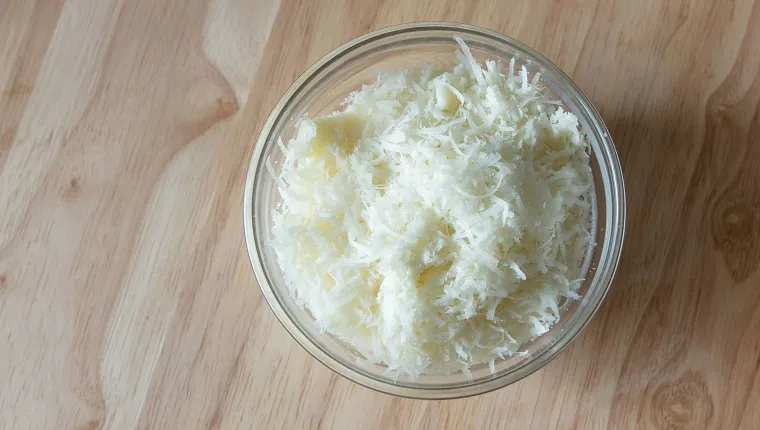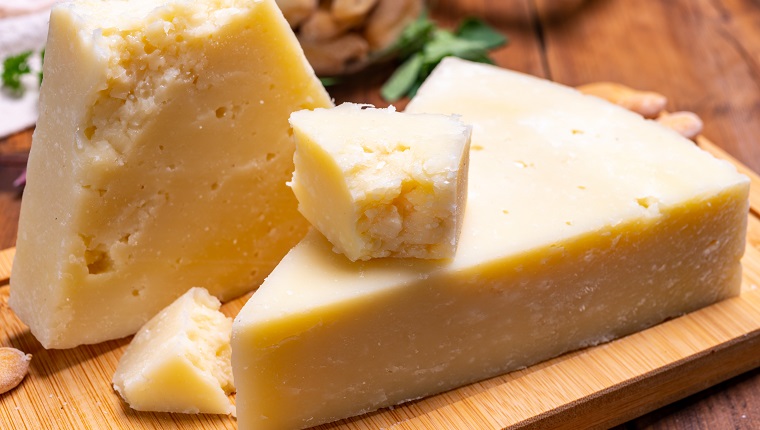Can dogs eat Romano cheese? Maybe you’ve wondered if you can share some with your dog while grating some Romano cheese to top a pasta dish you’ve rustled up in the kitchen. If humans can eat Romano cheese, can dogs safely eat it too?
There is no short yes or no answer to whether dogs can eat Romano cheese safely. It’s not technically considered to be toxic for dogs — unlike blue cheeses which in general should be avoided.
As a hard cheese, Romano is a little lower in lactose than many other cheeses, which means there’s less chance of it upsetting a dog with lactose intolerance. But Romano should really only be an occasional treat for your dog rather than a key part of their daily diet.
As always, you must ask your regular vet before sharing any human food with your canine companion, including cheese. Here’s what you need to know about Romano cheese and dogs.
When Is Romano Cheese Okay For Dogs To Eat?
Luckily, you won’t see Romano cheese included on any lists of foods that are poisonous for dogs to eat.
When it comes to nutrition, Romano contains higher-than-usual levels of omega-6 polyunsaturated fatty acids, which can help improve the condition of your dog’s coat and skin. In some cases, a hard cheese like Romano may also help dogs who are battling inflammation issues.
If you decide to serve up some Romano to your dog as a treat or for a special occasion, the precise amount of cheese that’s safe for your dog to consume will depend on an array of factors including their age, weight, and general health.
Your vet can help you to formulate safe cheese guidelines for your particular dog.
Finally, as Romano is a hard cheese, it’s best to grate it before serving it to your dog so that you avoid it becoming a choking hazard or possibly causing harm to your dog’s teeth. Additionally, make sure that you only feed your dog the actual cheese and not the rind.
When Is Romano Cheese Bad For Dogs?

Romano cheese contains a lower level of lactose than some other cheeses. But this doesn’t mean it’s totally safe for lactose intolerant dogs. In general, if you notice an adverse reaction when your dog eats cheese or dairy, it’s best to try and cut it out of their diet.
Being that Romano cheese is high in fat and contains a high level of sodium, it is not going to have much positive effect on your dog’s weight and general health.
Feeding your dog too much Romano cheese might contribute towards canine obesity, which in turn can result in a host of other medical conditions.
So consider Romano cheese a fun, occasional snack for your dog, and always serve cheese in moderation.
Does your dog ever enjoy getting a taste of Romano cheese? What healthier snacks do you share with your pooch? Tell us all about it in the comments section below!









